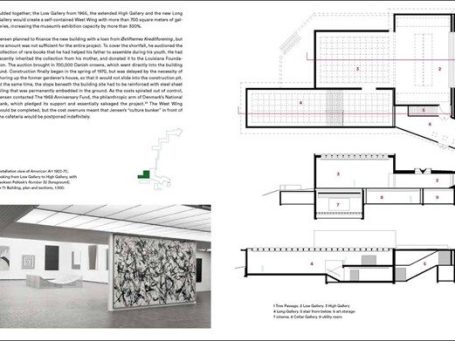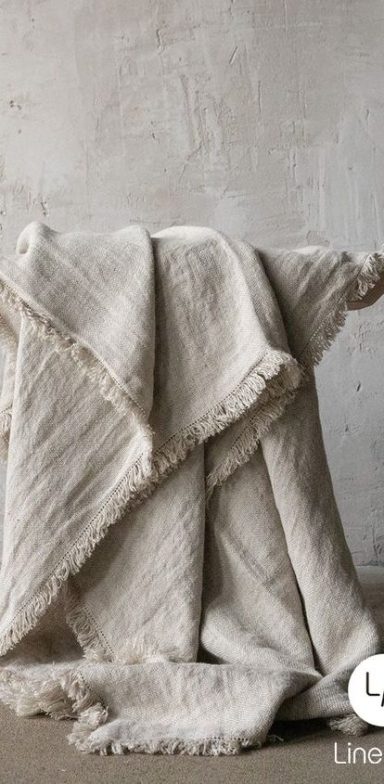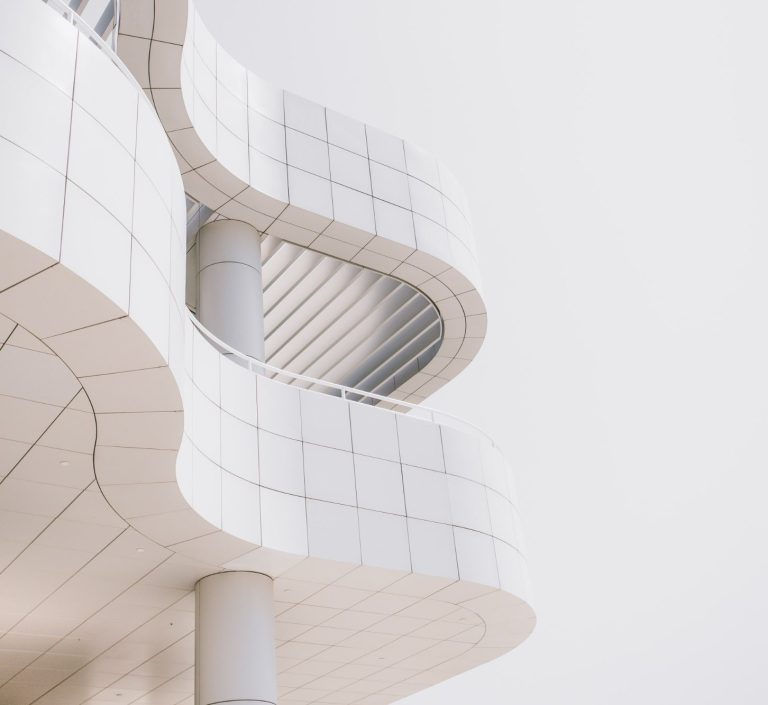04
July
2022
The Architecture and Aesthetics of Contemporary Art Museum, Thesis, M.A. Journalism of Arts and Culture
The evolution of architecture, in terms of the design of the buildings that house museums, has been the subject of intense debate, as, in many cases, the crucial question is whether the building and its form can overshadow the exhibits, distracting attention and interest of visitors. Especially in recent years, the architecture of art museums has a variety of challenges and, in many cases, the design, the materials chosen and the structure of the building can be considered unconventional. The purpose of this paper is to examine the issue of architecture and aesthetics of contemporary art museums. Under these circumstances, an extensive bibliographic review was carried out, while at the same time, modern museums with great architecture were studied, as well as architects, who radically changed the way in which the visitor faces the art experience. As it turned out, the philosophy of architecture is often opposed to the projection of art, however, nowadays, the building that houses a museum has disengaged from its traditional role and is gradually becoming a key element of the urban landscape and a tourist attraction. Keywords: architecture, contemporary art, museum



About
Discover the latest insights and perspectives on contemporary art, minimalist interior design, and fashion at Maison Abstaite. Our team of experienced journalists and researchers brings you in-depth articles, thought-provoking essays, and expert analysis on the trends shaping the world of contemporary culture. Join us as we delve into the intersection of art, architecture, and fashion, and explore the minimalist aesthetic that is changing the way we see the world. With a focus on quality and originality, Maison Abstaite is the ultimate destination for anyone looking to deepen their understanding and appreciation of the contemporary cultural landscape.
Wabi Sabi - The Japanese Aesthetics in Interior
Wabi-sabi is a Japanese design concept centered around the acceptance of transience and imperfection. It emphasizes finding beauty in imperfection and impermanence and values authenticity and simplicity over excess and opulence. In the context of aesthetics, it is the appreciation of natural patina and aging in objects, and the idea that objects that have a history and have been well-used are more beautiful than new, pristine objects.
Wabi-sabi interior Color Pallete
The color palette used in wabi-sabi interior design typically consists of earthy, natural tones such as browns, grays, and greens. These colors are inspired by nature and aim to evoke a sense of calm and grounding. Neutral and muted tones, such as beige, are also common in wabi-sabi interiors. The color palette is meant to blend in with the natural surroundings and create a harmonious environment, rather than drawing attention to itself. Bright or bold colors are generally avoided in wabi-sabi design.


Mario Bellini Sofa
Mario Bellini is an Italian architect and industrial designer who has designed several furniture pieces, including sofas. His designs are known for their clean lines, simple forms, and high-quality materials. Some of his most famous sofa designs include the Camel Sofa and the Barcelona Sofa, which are both considered icons of modern design. Bellini's sofas are highly sought after by collectors and interior design enthusiasts for their timeless style and high-quality construction. Overall, a Mario Bellini sofa is a great investment for anyone looking for a stylish, functional, and well-made piece of furniture.

Hans Wegner Wishbone Chair History
The Hans Wegner Wishbone Chair, also known as the CH24, is a classic example of Scandinavian minimalist design. Designed by Danish designer Hans Wegner in the 1950s, the Wishbone Chair is characterized by its simple, elegant form and use of natural materials.
In terms of design, the Wishbone Chair features a distinctive "Y" shaped backrest that provides both comfort and support. The chair is constructed from solid wood, typically beech or oak, and is finished with natural oil or lacquer for a warm and inviting look. The seat of the chair is woven from the paper cord, providing a flexible and comfortable seating experience.
Functionally, the Wishbone Chair is designed to be both comfortable and durable. The chair's solid wood construction provides a sturdy foundation, while the woven seat offers a comfortable seating experience. The chair's minimalist form makes it a versatile piece that can be used in a variety of different settings, from a dining room to a home office.
In terms of its place in the larger context of furniture design, the Hans Wegner Wishbone Chair is considered one of the most iconic pieces of Scandinavian furniture. It’s simple, elegant form and use of natural materials make it a timeless piece that continues to be popular today, more than 70 years after it was first designed. The Wishbone Chair is a standout piece within the larger context of furniture design, offering both style and functionality in equal measure.

Mario Bellini Sofa rocks the Interior trends since 2022
Mario Bellini is an Italian architect and designer who has created a number of influential pieces of furniture and design objects. The Mario Bellini sofa is likely one of his most well-known designs. When analyzing the sofa, some key elements to consider include:
- Form and Function: How does the sofa's design serve its intended function and how does it integrate with its surrounding space?
- Materials: What materials were used in the construction of the sofa and how do they contribute to its overall aesthetic and durability?
- Craftsmanship: How was the sofa constructed and what level of craftsmanship is evident in its finished form?
- Style and Aesthetic: What style of design does the sofa reflect and how does it fit into the larger context of Bellini's body of work?
- Ergonomics: How comfortable is the sofa and does it offer good support for its intended use?
- Historical Context: How does the sofa fit into the broader historical context of furniture design and what were the design trends and cultural influences at the time of its creation?
By considering these elements, you can gain a deeper understanding of the design of the Mario Bellini sofa and what makes it a significant piece of furniture design.
The Mario Bellini sofa is designed to serve the dual functions of seating and relaxation. The sofa features clean lines and a minimalist aesthetic, which creates a harmonious integration with its surrounding space. The form of the sofa is simple yet elegant, and its neutral colour palette allows it to blend in seamlessly with any decor style. The sofa's design emphasizes comfort and functionality, with plush cushioning and ergonomic shapes that encourage lounging and relaxation.
In terms of integration with its surrounding space, the Mario Bellini sofa is designed to be both functional and aesthetic. It is intended to provide a comfortable and stylish seating option within a living or lounge space, and its clean lines and neutral colours allow it to blend in with a range of different decor styles. The sofa's design is versatile enough to work well in a variety of different settings, from a contemporary living room to more traditional lounge space. The sofa's design integrates well with the surrounding space by offering a comfortable and functional seating option while also serving as an aesthetically pleasing addition to the overall decor.
The materials used in the construction of the Mario Bellini sofa can vary depending on the specific model and manufacturer. However, high-quality materials are typically used to ensure both the sofa's aesthetic appeal and durability. Some common materials used in the construction of the Mario Bellini sofa include:
- Leather: Leather is a durable and versatile material that is often used for the upholstery of sofas. It adds a sophisticated and luxurious feel to the sofa while also offering good wear resistance.
- Wood: Wood is a common material used for the sofa's frame and legs. It provides a solid base for the sofa while also contributing to its overall aesthetic.
- Foam: Foam is often used for cushioning in sofas, and the Mario Bellini sofa is no exception. High-density foam provides comfort and support while also helping to maintain the sofa's shape over time.
- Stainless Steel: Some models of the Mario Bellini sofa feature stainless steel accents, which add a modern touch to the design and provide durability.
The materials used in the construction of the Mario Bellini sofa contribute to its overall aesthetic and durability by providing a solid foundation and comfortable seating experience. The use of high-quality materials, such as leather and foam, also helps to ensure that the sofa will last for many years to come.
Top of Form
What style of design does the Mario Bellini sofa reflect and how does it fit into the larger context of Bellini's body of work?
The Mario Bellini sofa reflects a minimalist and modern style of design. The sofa features clean lines, a neutral color palette, and an emphasis on form and function. This minimalist aesthetic is consistent with Bellini's broader body of work, which often incorporates simple and functional forms that are nonetheless striking and impactful.
Bellini is known for his innovative and forward-thinking approach to design, and the Mario Bellini sofa is a perfect example of this. The sofa's design incorporates a range of different materials and techniques in order to create a functional and aesthetically pleasing piece of furniture. The sofa fits into the larger context of Bellini's work as a well-crafted and thoughtfully designed piece that seamlessly integrates form and function.
In terms of the larger context of furniture design, the Mario Bellini sofa is a contemporary piece that reflects the changing design trends of the 20th and 21st centuries. It draws on the minimalist and functional approach that characterized the Modernist movement, while also incorporating elements of contemporary design that reflect the changing needs and tastes of the modern consumer. The sofa is a standout piece within the larger context of furniture design, offering both style and functionality in equal measure.
Scandinavian minimalist designer furniture that came back in trend in 2023.
Scandinavian minimalist design experienced a resurgence in popularity in 2023, with many classic pieces of designer furniture being re-released or reinterpreted for contemporary audiences. Here are some of the best examples of Scandinavian minimalist designer furniture that have come back in trend:
Arne Jacobsen Egg Chair
A classic example of mid-century Scandinavian design, the Egg Chair has been re-released by a number of manufacturers in recent years and remains one of the most iconic pieces of furniture from the era.
Poul Kjaerholm PK22 Lounge Chair
This minimalist lounge chair was designed by Danish designer Poul Kjaerholm in the 1950s and is characterized by its clean lines and simple form.
Hans Wegner Wishbone Chair
Also known as the CH24, this chair was designed by Danish designer Hans Wegner and is considered one of the most iconic pieces of Scandinavian furniture design.
Alvar Aalto Stool 60
This three-legged stool was designed by Finnish architect Alvar Aalto and is characterized by its simple, functional form and use of natural materials.
Ilmari Tapiovaara Mademoiselle Chair
This chair was designed by Finnish designer Ilmari Tapiovaara and is characterized by its elegant, minimalist form and use of natural materials.
These are just a few examples of the many classic pieces of Scandinavian minimalist designer furniture that have come back in trend in 2023. These pieces offer a timeless, elegant aesthetic that continues to resonate with contemporary audiences, making them a popular choice for those seeking to incorporate a touch of mid-century style into their homes.
Linen is a popular material in minimalistic interior design due to its natural, soft, and durable qualities. The use of linen in home decor can add texture and interest to an otherwise neutral or minimalistic space.
Linen is made from the fibers of the flax plant, which makes it a natural and environmentally friendly option for home decor. It has a soft, smooth, and naturally wrinkled texture that adds depth and character to a room. In addition, linen is very durable, making it a practical choice for areas that get a lot of wear and tear, such as upholstered furniture and bedding.
Minimalistic interior design often relies on neutral colors, and linen is a great material to use in this context. Its natural color palette of off-whites, beiges, and soft grays can be easily incorporated into a neutral color scheme, adding texture and warmth without overpowering the space.
Linen can also be easily dyed, making it versatile and customizable. This allows designers and homeowners to incorporate a range of colors into a minimalistic interior design, adding visual interest and depth to the space.
In terms of functionality, linen is breathable, moisture-wicking, and hypoallergenic, making it a great choice for bedding and upholstered furniture. Its durability also makes it a practical choice for high-traffic areas of the home, such as living rooms and bedrooms.
In conclusion, linen is a versatile and practical material that can be used in a variety of ways in minimalistic interior design. Its natural texture, durability, and versatility make it a great choice for adding texture and interest to an otherwise neutral or minimalistic space.


Contemporary Architecture design trends for 2023

- Sustainability and eco-friendliness: Designs that incorporate energy efficiency and green technology are becoming increasingly popular.
- Blurring indoor-outdoor spaces: Designs that blur the lines between indoor and outdoor spaces, such as floor-to-ceiling windows and minimal walls, are trending.

- Mixed-use spaces: Multi-functional spaces that can be used for various purposes, such as live, work, and play are becoming more common.
- Innovative facades: Facades that incorporate new materials, shapes, and forms are gaining popularity.
- Net-zero and Passive House design: These designs focus on energy efficiency and sustainability, reducing a building's environmental impact.
© A Destination for Timeless Style: Exploring the Intersection of Art, Architecture, and Minimal Fashion


